When you’re looking at sleep training, the idea of all that crying may scare or even appall you. So how do you sleep train without any sobbing or tears? Is that even possible – or is it just a fanciful dream?
No-cry sleep training uses attachment style parenting that focuses on teaching a baby to adjust to change over time gradually. Parents are free to comfort their children as much as desired. No-tears sleep training may take several weeks or longer to complete.
Ready to know more about no-tears sleep training? Keep reading!
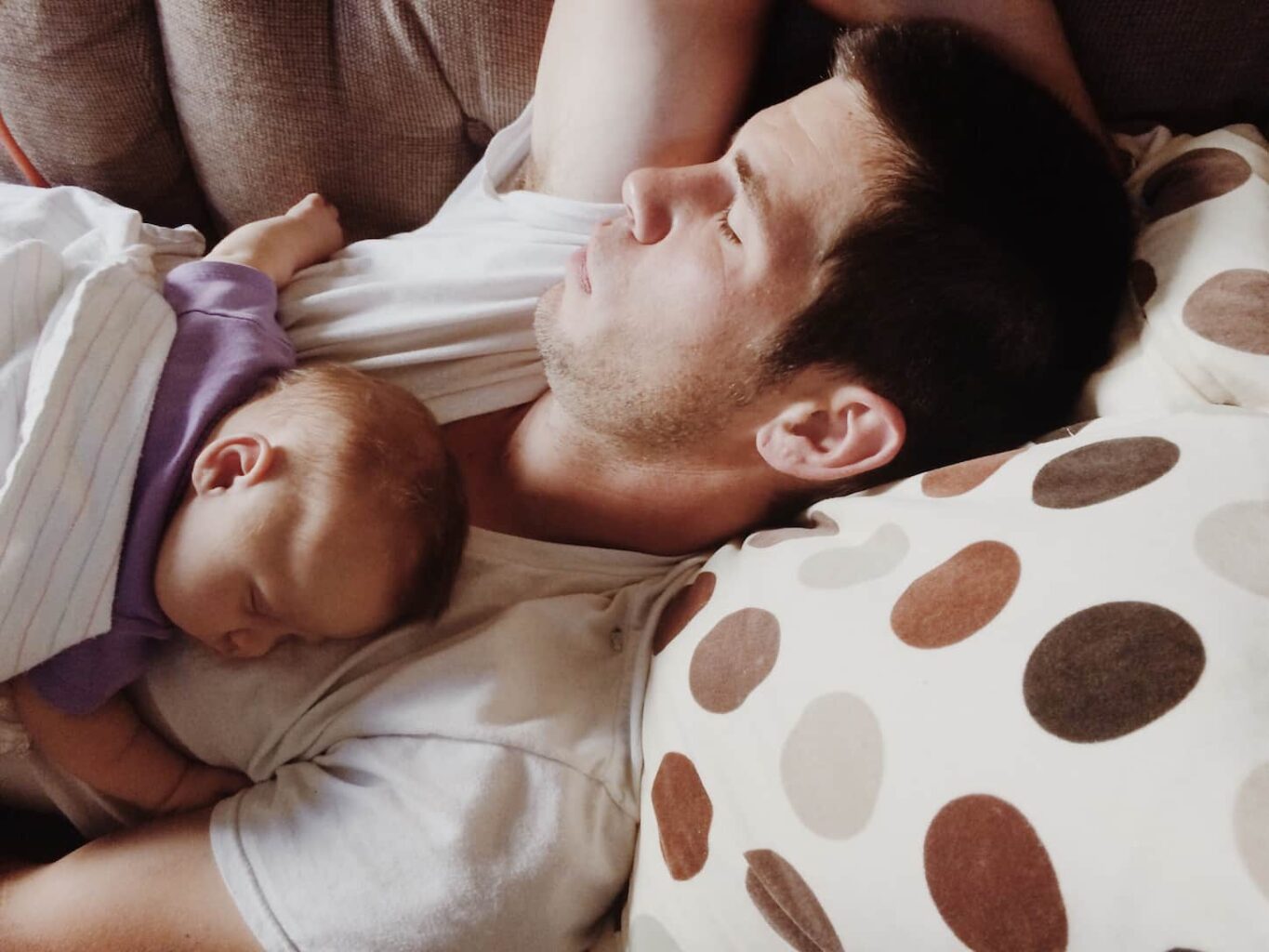
What is No-Cry Sleep Training?
No-cry sleep training is also referred to as tear-free, no-tears, and cry-free sleep training. Tear-free sleep training is a group of behavior-based modification techniques that focus on helping children learn to sleep at night while preventing tears (and crying) and promoting attachment parenting.
To some, no-cry sleep training is synonymous with gentle sleep training. However, because some gentle sleep training methods do allow for some tears, not everyone agrees that gentle and no-cry sleep training is the same.
However, they are very similar, and many of the techniques are the same. The difference is primarily in parental timing response and how much crying happens.
With no-crying sleep training, there may be a more blatant attempt to prevent any tears, while gentle sleep training may allow a few tears while a parent is in the process of responding to their child. However, this is a nitpicky definition difference – especially since it’s impossible to prevent every possible tear or cry.
In any case, though, there tends to be a slight definition difference between gentle and no-cry sleep training in the overall parenting style – with no-tears proponents perhaps being more focused on attachment parenting. Even so, it’s essential to know that many people do use these terms interchangeably.
The most common sleep training techniques used in tear-free sleep training are:
- Wait and See – this method simply focuses on waiting, knowing that your child will, eventually, grow into a regular and reliable sleep routine with your guidance.
- Focus on Bedtime – this technique calls for focusing on bedtime first – knowing that it’s the most important part of sleep training. Focusing on the bedtime routine first can, in many instances, help resolve other issues.
- Fading Method – this method uses patience, time, and varying levels of parental presence/comfort to gradually fade out undesirable behaviors and replace them with better (or at least desired) habits.
- Adult Fading – this method uses an adult’s physical presence in the room to comfort the baby. Or, the baby may be in the parent’s room (and bed) for a time. Gradually, the parent and child will begin to sleep separately.
- Controlled Comforting – this method uses comforting on a parent-determined basis to guide sleep training and behaviors in the desired direction.
- Camping Out – in this method, an adult “camps out” in the bedroom where the child is sleeping. Gradually, the parent moves further and further from the child while camping out to complete sleep training.
- Pick Up, Put Down – this method allows a parent to pick up and comfort a child any time either the child or parent feels it is appropriate. Once the baby is calm and back in a drowsy but awake state, the baby is put back to sleep in their bed or space.
- The Chair Method – this technique calls for a parent to sit on a chair (next to the baby) while they fall asleep. This technique can be personalized by adding any fading or moving the chair as desired by the parent.
We’ll go into more depth on each of these methods later on in this article.
Who Should Use No Tears Sleep Training
No tears sleep training methods are perfect for families and parents who prefer to:
- Eliminate as many tears and crying as possible while sleep training.
- Spend more time working through sleep issues to prevent as many tears as possible.
Here’s a fact (not sure if it’s a fun one or a not-fun one): no-cry sleep methods work by being slow. The slower you make changes to the sleep situation, the more tears and crying you can prevent.
So as long as you’re patient and have time to take things as slowly as possible while working towards your sleep goals, you can prevent (or preemptively eliminate) as many tears and crying as possible. And, more importantly, you can avoid using intentional crying as part of sleep training.
When to Use Sleep Training without Tears Methods
Because no-cry sleep training methods are versatile and intentionally slow-paced, they can be used at almost any age and for pretty much any sleep concern. These methods are perfect for surviving sleep regressions, addressing sleep associations, or whatever else.
Now, depending on your child’s age, you may need to make a few age-appropriate adjustments to the technique of your choice. We’ll discuss age-appropriate recommendations and changes later on in this article.
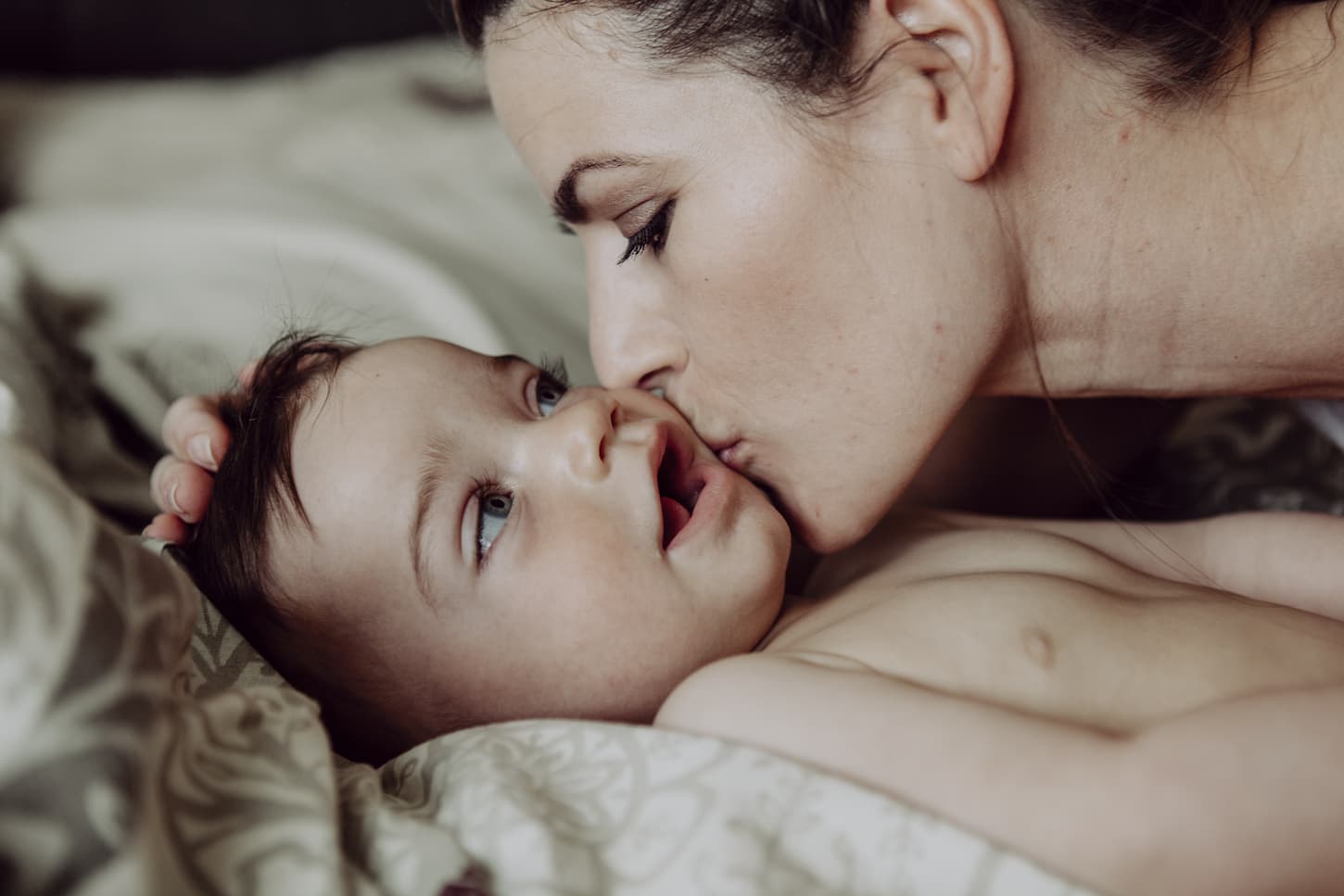
How to Sleep Train Without Crying
The basic premise of each of these no-tears and no-crying sleep training methods is the same as gentle sleep training techniques. Even so, we’ll go through the basic formula and then detail the specifics.
- Go through your bedtime routine.
- Put your child in their bed while still awake – but as they’re tired or drowsy. This is the “awake but drowsy” stage.
- Let your child self-settle as long – as they’re calm.
- If your child needs attention or soothing, step in, and comfort them.
- Repeat steps 2-4 as needed or until your child falls asleep.
Use these steps any time your child wakes up during the night and/or at naptime, too. They’re highly versatile and flexible, which is perfect for almost every situation.
Steps 3 and 4 will be determined by which of the tears-free sleep training methods you choose – and then further altered if you make any personalizations to your sleep training plan.
Please note that if a child is overtired or exhausted, the “awake but drowsy” window may pass faster than you anticipated. The onset of screaming and tears will let you know this is the case. Moving bedtime a little bit earlier can help prevent this.
To read more about using earlier bedtimes to manage issues related to a baby being overtired and exhausted, read my article on it by clicking here.
Now that you know the basic recipe, let’s look at the various no-cry and/or gentle sleep training methods to select. These will impact steps 3 and 4 of your sleep training plan.
Common No-Tears Sleep Training Methods
Now let’s cover some of the techniques in more detail – and give examples.
| No-Tears Sleep Training Method | Description | Example |
|---|---|---|
| Wait and See | Give your child time, patience, and love while they grow enough to develop a healthy sleep habit and routine – while guiding them down the right path. | A 2-month-old won’t have a reliable sleep schedule – but you can still set up a day and nighttime routine to build to a sleep schedule. |
| Bedtime Focused | Create and use a bedtime routine that works for your child. Focus on that and allow other pieces of the puzzle to fall into place. | If baths excite rather than calm your child, remove bath time from the bedtime routine. |
| Fading | The transition from the current sleep situation to a better one with patience and time. | Move a child to their own bed by getting them used to it first over several days and playing on it. Then start having bedtimes on the bed. Finally, move bedtime to the new bed. |
| Adult Fade | An adult (or parent) gradually fades out of being present from bedtime or any other time. | Stay in the room at bedtime. Over a few days, gradually stay less and less time – until you’re able to leave after tucking in your child for the night. |
| Controlled Comforting | Parents comfort a baby as needed – and gradually diminish the amount of time spent comforting as directed by the baby’s needs. | Over days and weeks, a baby who wakes up in the night is able to be comforted in less and less time – and begins to wake up less frequently as a result. |
| Camping Out | An adult camps out with the baby, offering support as needed. | Stay with the baby at bedtime for a few nights – then gradually leave earlier and earlier or combine this with the chair method. |
| Pick up, Put down | When your baby needs you, pick them up and comfort them. Get them back to the “awake but drowsy state” and put them back down. | When a baby wakes up during the night, comfort them and help them go back to sleep. This way, they can link sleep cycles and begin to sleep all night. |
| The Chair Method | A parent sits on a chair next to the baby and offers support and comfort. Gradually, the parent moves the chair further and further away. | Over a period of two or more weeks, a parent (sitting on a stool) moves further and further away at bedtime until they’re able to tuck the child in and walk out of the room. |
Most of these techniques also qualify as gentle sleep training methods. The difference is in how you personalize the technique and how many tears you allow. For more information on the gentle sleep training methods, read our comprehensive article on it here.
Combining and Customizing No-Tears and Gentle Sleep Training Methods
The best way to see results with any gentle and/or no-crying sleep training, in my experience and research, is when you use a combination of several techniques. And you can combine any that appeal to your parenting style.
For example, we used a combination of fading, camping out, pick-up put-down, and adult fading with our daughter’s latest sleep training. In other words, we took turns being next to her and holding her while she fell asleep – and we gradually phased that out over time.
That’s one of the best parts of no-tears and gentle methods of sleep training – you use what appeals to you. Then, see what works. Keep doing that – while gradually phasing it out and building towards the desired bedtime routine.
That way, you’re there for your child, practicing solid attachment parenting, and eliminating (or at least minimizing) any need for crying and/or stress with sleep training.
So go ahead and combine methods!
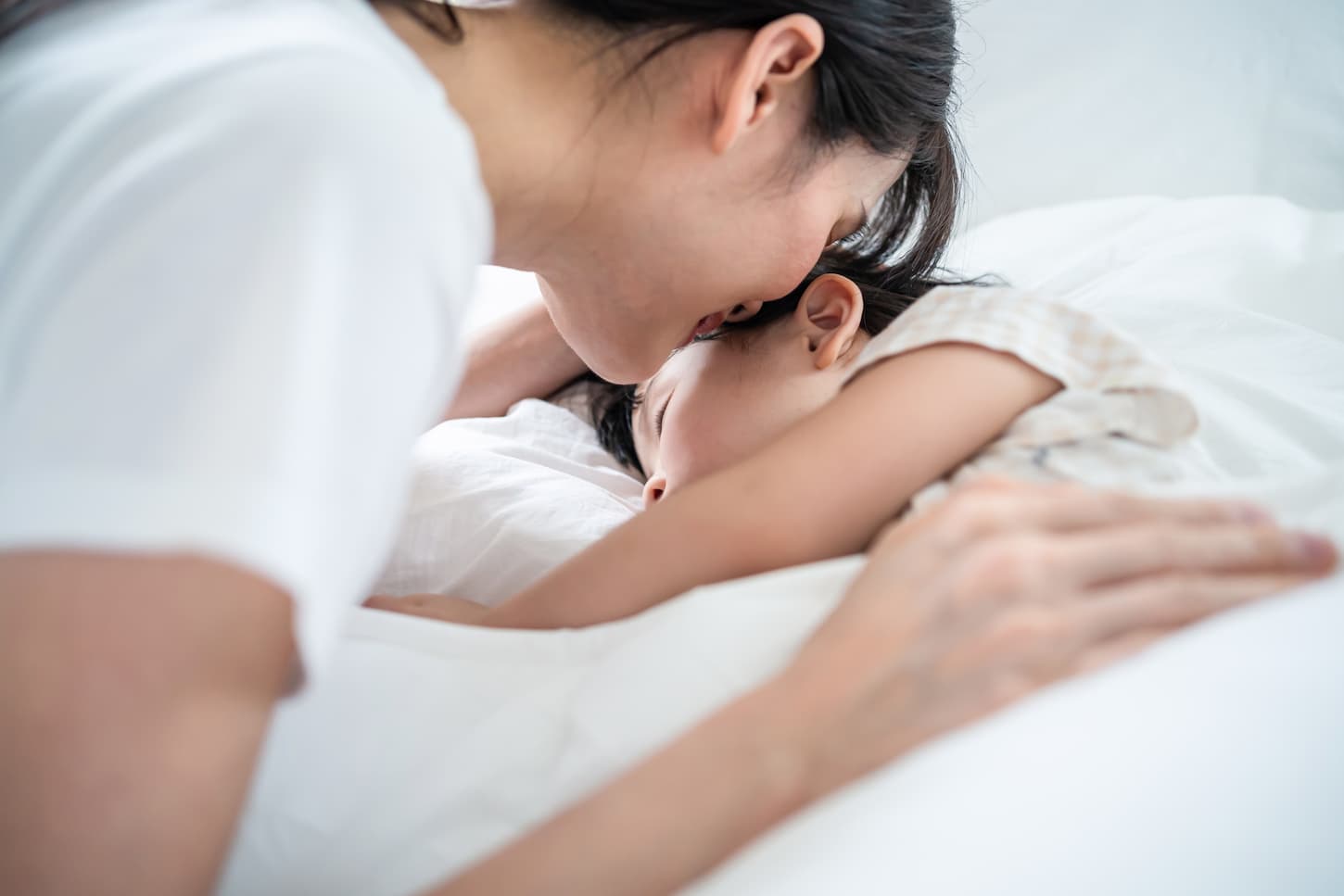
No Crying Sleep Training by Age
Your child’s age and developmental stage will have an impact on how you personalize some of the sleep training techniques. Please note that if there is a difference between your child’s physical age and developmental stage, you should use their developmentally adjusted age.
In other words, if your baby was born prematurely, please use their adjusted age, based on their due date rather than on their actual birth date.
Newborns and No-Tears Sleep Training
While most sleep training techniques won’t work for babies less than at least 4-6 months of age, no-cry sleep training techniques can work for newborns as long as you recognize that success will take weeks and months rather than days.
Also, you’ll need to make sure that you’re meeting your baby’s physical and emotional needs. However, because you’re focusing on a tear-free sleep training approach, you’re probably already making sure to feed and comfort your child as needed.
Many families can proactively sleep train babies using any of the tear-free methods listed so far, although the most popular methods include wait and see, fading, and pick up put down.
In any case, remember that your baby needs you. Comfort them as needed. And it’s going to take a while (several months, even) before they’ll be able and ready to sleep through the night. However, you’re on track to getting them there by proactively sleep training them with tear-free techniques.
No Crying Sleep Training Babies
For most babies between about 6 and 14 months of age, the cry-free sleep training techniques work without needing to make many adjustments.
There’s only one main adjustment that needs to be addressed, and that’s to make sure that your baby is getting adequate nutrition during the daytime – so that nighttime can be spent sleeping.
Even so, many families will still nurse or bottlefeed at night – and use child-led weaning. But creating a goal to focus on daytime feeds, does set up a sort of fading technique for eating – that will gradually help your baby’s sleep training journey. So keep it in mind as a part of the goal – and it’ll help you get there faster.
Can Toddlers Sleep Train Without Crying?
Tear-free sleep training methods still work well with toddlers, although they do lose some efficacy as toddlers begin to exert their opinions and independence. However, if you make some adjustments for that, then no-cry sleep training methods can be a fantastic choice.
There are three main adjustments to make for toddlers:
- Talk to your child and set expectations;
- Give them choices;
- Make things fun.
Talking to your toddler doesn’t have to be anything fancy or complicated – it can be setting the simple expectation that “big kids like you sleep in their bed all night” or whatever your current sleep goal is.
Next, give your child choices – or things will become a fight. However, the choices don’t have to be fancy. They work better if you give them pre-selected options.
Our toddlers love getting to choose their pajamas every night – from two pairs that we hold up. They love getting to decide if they brush their teeth or if we help them. And then they get to choose if they fill up their sippy cup of water – or if they want us to do it.
Finally, give things an element of fun. Make getting ready for bed a race. Or see if they can brush their teeth for a whole song. Adding in some fun will make bedtime (and everything else) go a whole lot better.
Tear-Free Sleep Training Big Kids
As your child continues to grow, you’ll need to continue making adjustments for tear-free sleep training to work. You will need to talk to your child and set expectations. You’ll also need to give your child more choices. And you will still need to make things fun.
However, as your child grows, they’ll want more than just 2 pre-selected choices. They’re going to want to have a say in things – like what time they’re going to bed. So sit down with your child and talk to them. Give them a say – while letting them know that your primary concern is their health and happiness. That way, you can set a bedtime that works for everyone.
We recently talked about bedtimes with our two oldest, school-aged boys. We agreed that bedtime could be delayed by 30 minutes. After several nights of rough bedtimes and overtired kids, we had to talk about how things weren’t working. We came to a new agreement – and moved bedtime up by 15 minutes. So far, this is working. As our kids grow, we fully expect to have this talk again multiple times.
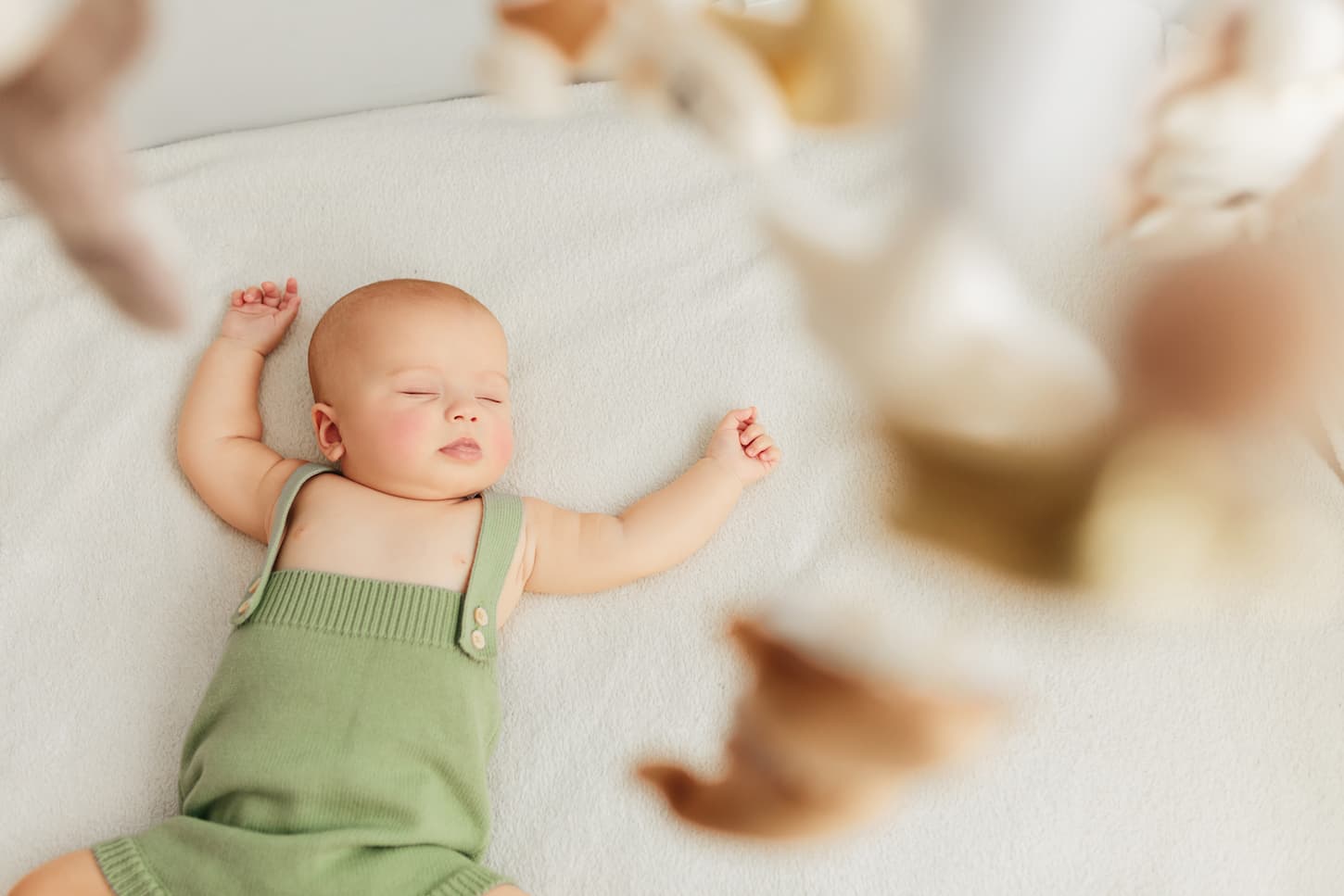
What Studies Say about Tear-Free Sleep Training
In a 2012 study, the American Academy of Pediatrics (AAP) states:
Parents and health professionals can feel confident using behavioral techniques for managing infant sleep.
Study: Infant Sleep Training is Effective and Safe (AAP, 2012)
While more studies will always need to be done and verify things, the existing studies are showing that sleep training children can be a safe and positive event. And, while some studies will say that the some-tears methods are as effective in the short-to-medium term, almost all of the reviews agree that no-tears sleep training techniques work – they just take longer.
For more information on what pediatricians have to say on sleep training, read my article on it right here.
The Safety of No-Crying Sleep Training
Studies are showing that sleep training (and especially no-cry sleep training) can be safely done. Several issues need to be addressed in order to make sure it’s safely done, though.
These issues include making sure that your baby is physically, emotionally, and psychologically safe.
Because no-crying sleep training uses attachment parenting, it’s generally safe to say that your baby’s emotional and psychological needs are being met even while sleep training.
That leaves physical safety. To make sure your baby is physically safe while sleep training, you’ll need to first make sure that their sleep environment is safe. That can mean making sure there aren’t any choking or suffocation hazards in their beds.
Making sure your baby is physically safe also means making sure that they’re fed when hungry, have a clean diaper, and so on.
For specifics on how to make sleep training (of any methodology) safe, make sure you refer to this post on sleep training and safety. That post details (and explains) all aspects of security. It also includes the AAP’s 2016 Updated Recommendations for a SafeInfant Sleeping Environment.
This content was written by Kimberly exclusively for SleepTrainingKids.com.
How Long Does Tear-Free Sleep Training Take?
Most of these techniques take a minimum of 2-6 weeks to work. However, if your child is dealing with multiple sleep concerns, it may take a week (or in some cases 2-6 weeks) per issue. A good rule of thumb is to expect each separate issue to take 1-2 weeks to resolve.
Some families do report dedicated, tear-free sleep training only takes a few days. In my experience, this is more so the case for families who are proactive in dealing with sleep issues.
How to Know if No-Crying Sleep Training is (or isn’t) Working
While no-tears sleep training works, it may not be for everyone or every situation.
Here’s how to know if tears-free sleep training is working for you and your family: you will see visible progress towards your desired sleep schedule and goals. The pace may be slow. As such, it may be easier to see with hindsight or by keeping a progress journal.
On the other hand, here is how to know if no-cry sleep training isn’t working for your family: despite regular effort and consistency, there won’t be visible progress OR your family reaches a breaking point. If your family has reached a breaking point where a faster intervention is needed, then tears-free sleep training is no longer working for your family. Another method or technique may be required.
Our oldest son did not progress fast enough with any of the no-tears sleep training methods we tried. We became so sleep-deprived that we had to turn to another option for a more immediate solution to one of our sleep concerns. Once that one issue was resolved, we were able to reinstitute gentler sleep training methods for subsequent sleep issues.
Just in case this isn’t clear enough, here are some questions you can ask yourself to determine if this sleep method is right – or if you should change to something else.
- How long have you been trying this current, tears-free sleep training method?
- What is working?
- What isn’t working?
- Can you continue on the current trajectory for several more weeks or months as needed? Or do you need more immediate interventions?
If you need more immediate intervention, then you will want to look at faster sleep training methods.
- If you are okay with some tears for a couple of nights, you may want to learn more about the Ferber method. Start by reading our beginner’s complete guide to Ferberization right here.
- If you’d like to minimize tears still while still seeing quicker results, then you may want to consider any of these gentle sleep training methods. Read our full guide to them right here.
Just remember that many of the gentle techniques are very similar (if not the same) to the tears-free methods. The main difference truly lies in how many tears you’ll allow – for fewer tears, it will take less time. Conversely, sleep training faster usually means a few tears.

Tear-Free Sleep Training Q&A
Now, let’s make sure that you’ve got all of your no-crying sleep training-related questions answered. Here are some of the most commonly-asked questions I’ve asked, researched, or been asked by parents like you.
Oh, and if you don’t see your specific question (or answer), just shoot me an email. I’ll try to respond to as many emails as I can – and I’ll get your question added to this post. To find out how to email or contact me, click here.
Do I have to let my baby cry to sleep train?
Tears are not required for sleep training. If you prefer for your child to have as few tears as possible, then you don’t have to let them cry it out at all. Use the tears-free methods outlined in this post to see sleep success without crying.
How much sleep does my child need to get while sleep training?
Sleep is a fantastic thing. Here is a table that shows how much sleep children need by age. This table shows how much sleep your child will need in general – and while sleep training, too.
| Age | Number of Naps | Average Nap Length | Wake Time Between Naps | Bedtime | Nighttime Sleep Requirements | Sleep Needed in 24 Hours |
|---|---|---|---|---|---|---|
| Birth to 6 weeks | 4 to 8 | 15 minutes to 4 hours | 45 minutes to an hour | Between 9 and 11 PM | 8 to 14 hours | 14 to 18 hours |
| 6 weeks to 3 months | 3 to 4 | 30 minutes to 2 hours | 1 to 2 hours | Between 8 and 11 PM | 8 to 13 hours | 11 to 15 hours |
| 3-6 months | 3 | 1 to 2 hours | about 2 hours | 8 to 10 PM | 9 to 12 hours | 12 to 16 hours |
| 6-9 months | 3 | 1 to 2 hours | 2 to 3 hours | 8 to 10 PM | 9 to 12 hours | 12 to 14 hours |
| 12-18 months | 1 to 2 | 1 to 2 hours | 3 hours | 7 to 8 PM | 10 to 12 hours | 12 to 14 hours |
| 18 months to 3 years | 1 | 1 to 2 hours | N/A | 7 to 8 PM | 10 to 12 hours | 11 to 14 hours |
| Preschoolers | 0 | N/A | N/A | 7 to 8 PM | 10 to 13 hours | 10 to 13 hours |
| Grade schoolers | 0 | N/A | N/A | 7 to 8 PM | 9 to 12 hours | 9 to 12 hours |
| Teenagers | 0 | N/A | N/A | 8 to 10 hours | 8 to 10 hours |
This table is created using data collected from the American Academy of Pediatrics and various governmental (USA) websites.
Do tears-free sleep training techniques work for naps?
They sure do! In some instances, you may need to work on naps separately from bedtimes. In other cases, families can handle both bedtimes, during the night, and naptime sleep training all at the same time. It’s going to depend on you, your family, and your situation. And how your baby reacts to it, of course!
Just be flexible and respond to your baby. Sleep training will happen – it just may take some time. But with no-crying sleep training, it will work.
How long will tears-free sleep training take at naptime?
Tears-free sleep training at naptime will depend on several factors – like if you’re dealing with other sleep issues or not. Generally speaking, it can take several weeks or longer to naptime sleep train with no-tears methods.
Even so, it’s going to depend on you, your child, and what works for your family.
Naptime sleep training for our family took several months to see complete success. We saw progress after several weeks of dedicated effort.
Can I continue to nurse (or bottlefeed) with tears-free sleep training?
Yes, please! Use those natural bonding and cuddling sessions (that just so happen to involve your baby’s favorite meal of milk) as needed. They’re a great way to comfort a hungry baby.
Just be sure to build them into your overall sleep training plan so that you can progress to your total sleep goals.
Do I have to wean while doing no-cry sleep training?
Most parents who use tears-free sleep training report that they practice child-led weaning, as it naturally involves fewer tears. So continue to nurse or bottlefeed as needed.
When you and your child are ready to wean, make sure you use these outlined tears-free techniques to make weaning easier – and read our tips on how weaning and sleep training can be managed together. Click here to read that now.
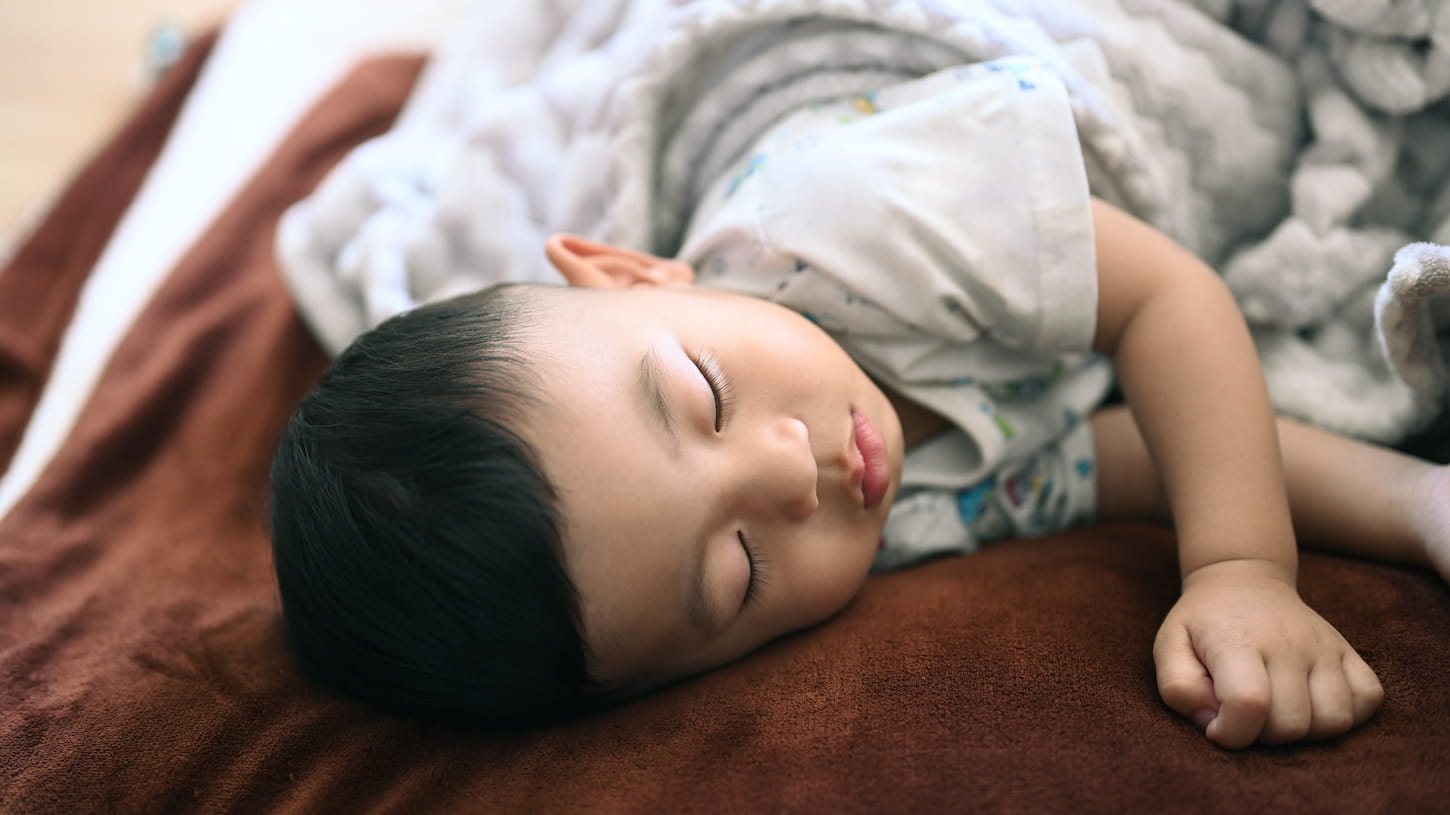
Resources
Learning about parenting or sleep training techniques is important to learn from various reputable sources. These are the sources used in this article and our research to be more informed as parents.
- American Academy of Pediatrics (Ed.). (2012, September 10). Infant Sleep Training is Effective and Safe, Study Finds. Retrieved August 26, 2019, from https://www.aap.org/en-us/about-the-aap/aap-press-room/pages/Infant-Sleep-Training-is-Effective-and-Safe-Study-Finds.aspx